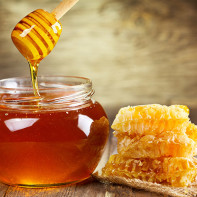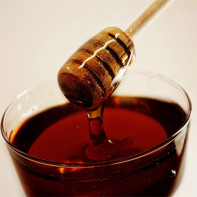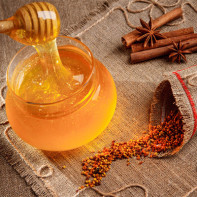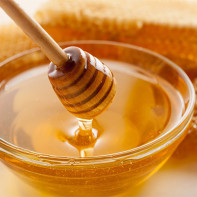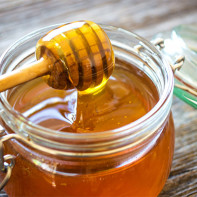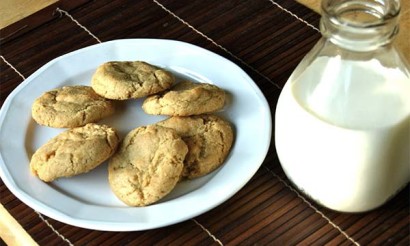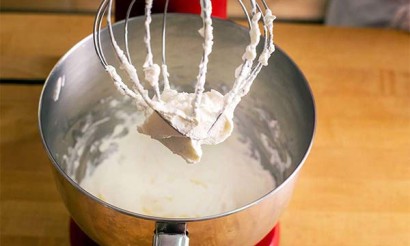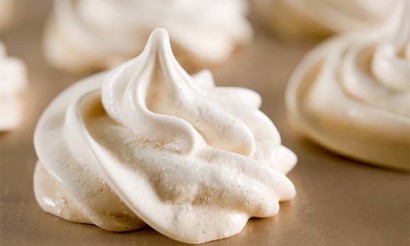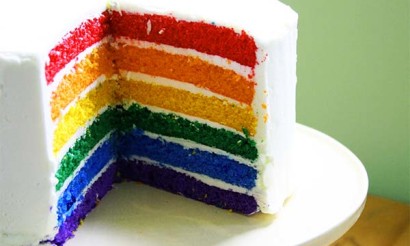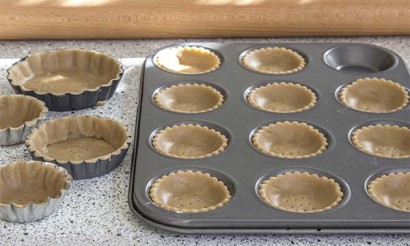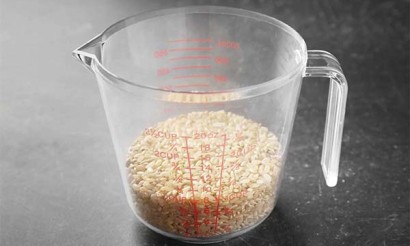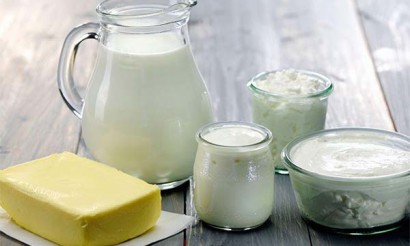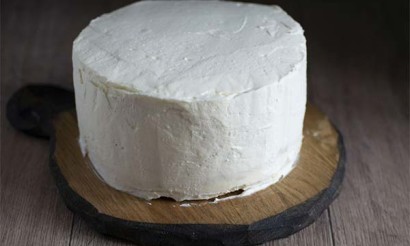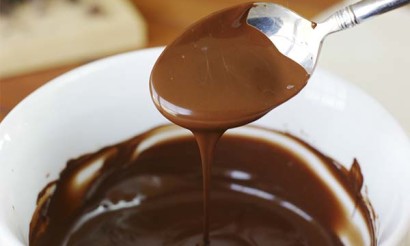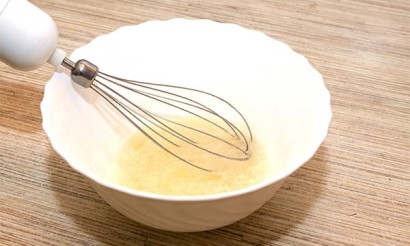How to check the naturalness of honey
Honey is truly a sweet gift of nature, the power of which lies in its healing properties, which is appreciated not only by people, but also by some members of the animal world. Some do not like it, but during a cold, everyone will remember its ability to heal, and then a jar of honey is sure to appear on the shelf.
- What is honey and its types
- How to check the naturalness of honey at home
- Taste and aroma
- Consistency
- Color
- Crystallization
- How to determine the addition of starch and/or flour
- How to determine the addition of chalk
- How to determine the maturity of honey
- How to determine the impurities
- How to determine the addition of sugar
- How to detect the addition of water
- How to test for natural honey with a chemical pencil
- Other Signs of Poor Honey
- Recipe with honey - Medovik cake
- Interesting facts about honey
What is honey and what kinds of honey
Honey is a product of animal origin. Bees do a great job so that we can have this valuable raw material from the nectar of various plants in our homes.
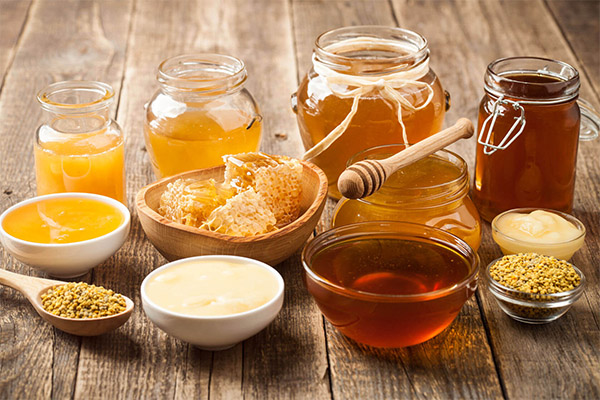
Types and varieties
The classification of honey is quite extensive, it can be divided according to characteristics.
The first would be the classification by origin. Honey can be divided into three positions, which are flower honey, fall honey, and mixed honey. Floral honey is obtained if the bees received nectar from the flowers. If one type of flower was used, this product will be called monofloral, from different types of flowers - polyfloral. Monofloral honey is not always found with beekeepers because it is impossible to get bees to fly at the flowers of the same plant. Nectar for fall honey is collected by bees in dry weather, deriving it from the secretions of other insects, honeydew, or leaves and stems (tree sap or resin). Such honey has less nutritional value.
A second classification classifies honey according to consistency, into liquid and solid, which is simply a candied mass. So if the product has been stored for more than three months, the honey may well change its appearance.
The third classification is by color. It is either light or dark. Light has a sweet and tart taste, so it is believed that it has a better nutritional value than the dark. By the way, it has a slight unobtrusive bitterness in taste.
There are many more classifications of honey by type - they include the place of collection, the season and more. It is worth taking a closer look at the most popular varieties.
- Lime honey is the most popular variety. It has a tart taste, floral and woody aroma, and a light amber hue almost similar to linden blossoms. This kind of honey is well suited for salad dressings (honey-mustard). These honeys are said to be particularly rich in vitamins and minerals.
- Buckwheat honey is the second most popular. It has a dark color, due to which you can immediately tell that this sweetener will be a little bitter in taste. But the bitterness is balanced by a distinct spicy tang.
- Flower honey is derived from the nectar of various kinds of flowers, it is also called meadow honey. Due to the variety of nectars of flowers its composition is always different, as well as nutritional value.
- Wild honey is the most valuable of all, because the bees are not bothered by regular collection for a long time. Such a product, unlike others, has a brighter flavor, and its consistency is much thicker. The taste of such honey is sugary-sweet, with a sour note.
- The rarest honey is black honey, which is produced when the nectar has been collected by black cumin bees. It has the color of dark bitter chocolate. Find such a bee product can be found only in Egypt. The price for such a unique product will be appropriate - very high. If you see such a product on the store shelves for a reasonable price - it is a fake. Most likely, it was added a dye to give it a darker shade, and in front of you is an ordinary linden honey with a changed color.
There are many other kinds of honey. These include sunflower, acacia, pine, cedar, and others. Each of them is rich in some trace element more than the other. So everyone should find his own variety, taking into account the peculiarities of the body.
How to check the naturalness of honey at home
All the useful properties of honey, which it is inherent in nature, will remain in the product only if it remains natural until the stage of distribution in jars for sale. Unfortunately, not all producers are conscientious and, for their own benefit, may use various additives that affect the quality of the product. The most popular varieties of honey are particularly prone to adulteration, and there is a risk of buying a fake. Therefore it is important for everyone to understand how to check the naturalness of the bee product, so that the next time you won't get caught.
Of course, in the store or on the market you can check the honey only by organoleptic qualities, so you have to rely on your senses.
Taste and aroma
Natural honey, in addition to sweetness, has a pronounced tartness, because of which he does not always like small children. These signs will only intensify if it is heated - this is a natural change in the product and has nothing to do with the use of additives. Remember, when you add honey to tea, you can clearly smell the honey aroma in the drink. A faint odor would indicate the addition of sugar.
You may be given a taste of honey at the market. Be sure to ask for a spoonful before you buy - a natural, undiluted bee product will be a bit tongue-twisting. Also keep in mind that dark honey will be a little bitter, so if you don't feel the bitterness - you're most likely dealing with a product with added sugar in front of you.
Also keep in mind that any honey will smell like the plant from which it was harvested: linden honey will smell like linden and so on. Lime and buckwheat honey have a particularly bright smell.
Consistency
It is viscous, so when you dip a spoon and stick into a jar of natural honey, once you pull it out, it will pull in a continuous thread, forming a spiral slide on the surface, slowly sinking into the overall mass. And when broken, the thread pulling away from the spoon will spring back to it. Honey with impurities will not behave that way - it will drip off the spoon in intermittent, viscous drops. If it disappears into the mass, you may have bought unripened honey or it may have been diluted with water.
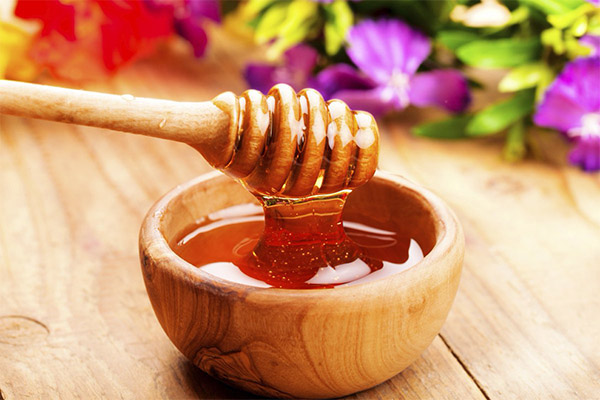
Sometimes you may see inclusions in the jar's contents in the form of a bee wing or stalk, or a small piece of honeycomb-even though the honey is filtered before being poured into jars. This, too, is one of the best indicators of its authenticity.
Color
Honey comes in a variety of hues, from light yellow to dark brown, all depending on the variety. But all varieties have one thing in common: if you look at the bee product in a glass jar, you can see that it is completely transparent. If additional sweeteners, thickeners, and colorings have been added to the honey, however, it will be cloudy with small inclusions in the form of sediment throughout the jar.
Crystallization
This is a process that is natural for natural honey and proves that there are no special additives in it. The speed of the process directly depends on the amount of pollen in the honey, but sooner or later it will come anyway. Usually crystallization begins three to four months after the honey is extracted. This process is popularly called saccharification. Honey that stays liquid all summer through winter is obviously made with chemicals or heated during production, all of which negatively change the nutritional value of the product, and heating contributes to the production of carcinogens. Therefore, in winter it is better to refuse liquid honey, because by the onset of cold weather the product without additives will certainly harden and saccharify.
All other methods of determining adulteration have to be carried out already at home, after purchase. But after a few tests, you can find a bona fide producer or apiarist and buy honey only from him.
How to determine the addition of starch and/or flour
These two components are added to the beekeeping product in order to simulate saccharification. This is especially common with unripe honey. So if you don't want to buy starchy honey again in the future instead of pure honey, experiment with iodine. Add a few drops to a teaspoon of product and watch closely for color changes. If the manufacturer cheated and the product contains starch, it will take on a bluish hue.
As a determinant the addition of chalk
Chalk is added to honey for a variety of reasons: to get a thicker consistency or to add extra weight to the product. At home, you can easily determine whether or not there is chalk in honey by adding 1 teaspoon of vinegar to several spoonfuls of the product diluted with water. If it starts to foam, it clearly has calcium carbonate (aka chalk) in it.
How to tell if a honey is ripe
Honey production is a very time-consuming process for bees. In addition to collecting nectar, they process it in their hives. They need to evaporate excess moisture, and the special enzymes that bees produce break down complex sugars into simple ones. The whole process takes at least a week, and already the finished honey will be in the honeycomb under a special wax cover. It is this kind of bee product that is considered ripe.
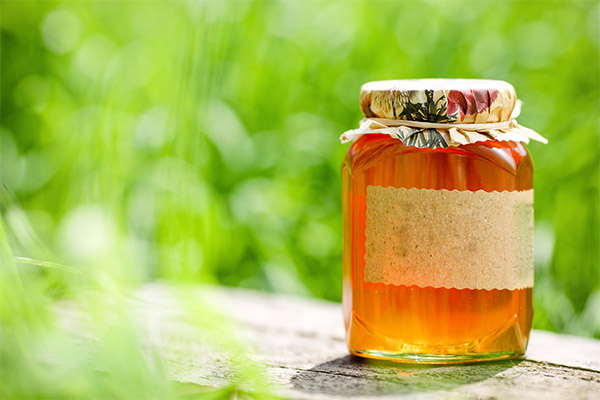
But some beekeepers, for their own profit, do not wait until the process is complete to sell unripe honey. Such a product will have a liquid consistency in appearance, but in terms of nutritional value it is clearly not as good as normal honey.
To test the maturity of honey at home, you need to heat it very slightly, at no more than 25°C, while stirring it constantly. Ripe product will curl up on the spoon as you lift and swirl it, while immature product will flow back into the jar in a sour cream.
Unripe honey may have a film on the surface, followed by a fermentation reaction and product deterioration. If you do buy one, heat it up a bit at home and eat it as soon as possible.
How to Identify Impurities
All because of the same pursuit of profit and the desire to sell less honey for the price of normal honey in it you can find not only chalk and flour, but also sand. To detect impurities in honey, you need to dissolve it in boiled water. It will dissolve completely without impurities. But if after dissolving the product there is a sediment on the bottom of the container, then some impurities have been added to the honey.
How to tell if sugar has been added
Adding sugar to honey can be determined by taste by not everyone. This requires, at least, very often eating a natural product of beekeeping or beekeepers themselves (such people can determine not only the addition of sugar, but also to say whether the bees were fed sugar syrup - this is also adulteration). But you can do some tests at home to determine it.
Take a spoonful of honey and hold a lit match or lighter to it. Honey with added sugar will smell like burnt caramel when heated, and in some cases the edges may turn black. The natural product of beekeeping will not change its organoleptic properties in any way - it will not burn or change color.
Another, simplest way is to add honey to tea. If it has added sugar, it will not dissolve completely, but will settle in the mug as a precipitate, and the tea itself will become darker.
Smell the honey when you buy it - it will have no aroma if sugar is added.
How to tell if you have added water
Of course, the easiest way to tell if honey has been diluted with water is to determine its consistency. A diluted honey has a very liquid consistency. Such honey will not flow smoothly from the spoon, but will drip, constantly interrupting the pulling thread. But there are cases when even this method will not help to accurately determine the adulteration.
For such cases, the following method was created, which, according to its creators, allows you to 100% identify a fake (but even some varieties of natural honey can fall under suspicion). Take ordinary paper and drop 1 teaspoon of product on it. If, after a while, you notice a spreading wet spot around the honey, you've obviously added water to it.
Also good honey (in liquid form) when rubbed between the fingers will be absorbed into the skin without leaving any scrubbing sensation. If you still feel rough inclusions - there is sugar in it.
If you put a piece of bread (preferably stale) in natural honey, it will not soften, but remain as dense. In a bee product with the addition of water, the crumb will quickly swell, soften and fall apart.
How to test the naturalness of honey with a chemical pencil
Such a pencil can be bought for less than 100 rubles. Just swipe it on a drop of honey. Its action is the same as that of iodine - in the presence of starch, flour or chalk, it will leave behind a trail of blue color. But you should remember that some craftsmen have found a way to cheat such a pencil, so this method should be used in conjunction with others to detect fakes.
Other signs of low-quality honey
Pay attention to these signs:
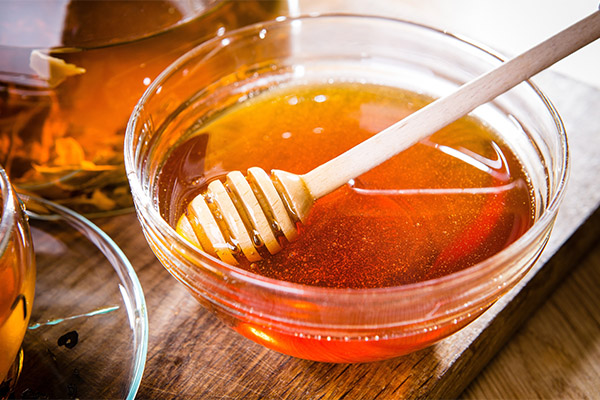
- Natural honey - a homogeneous shade, even color, without abrupt changes in the palette.
- Do not take honey if you see stratification - the thick consistency on the lower layer and liquid on the upper layer indicates immaturity or that water has been added to it.
- A very light color of honey would indicate feeding sugar syrup to the bees.
- Liquid honey that smells like burnt caramel or has an amber tint that is not typical of the variety has been heated, most likely the product was candied but decided to give it a more attractive marketable appearance.
- Falsified honey will curdle in hot milk, whereas natural honey will dissolve and leave no residue; if it curdles, then you are faced with sugar syrup or a product with added citric acid.
- Natural honey when you dip a heated copper wire in it will stay on it and when you take it out - in this case, it should not drip.
- If honey stratified during storage, then it was originally unripe, you need to mix it thoroughly and eat it quickly - the shelf life of such a product is not long.
- Honey has its proper weight, which characterizes its naturalness: for example, a liter jar of honey weighs on average 1.5 kg, if the weight of the jar is less, then you have a counterfeit - the seller decided to sell you a product of beekeeping with water for the price of real honey.
- The low-quality product will be from those beekeepers, whose hives are located near highways and roads - it will contain harmful substances that can harm your health.
- In a dry summer, there is a risk of buying a honey that has fallen off (it will be more bitter than flower honey, darker in color) or a honey whose nectar was harvested from sugar or its syrup - such a product has a shorter shelf life.
Natural honey is very difficult to find, and it is rare that one is lucky enough to buy it the first time. Usually it is by trial and error, you need to try the products of several sellers to find a non-falsified product. You can only protect yourself from buying substandard honey by finding your own beekeeper or producer.
Recipe with honey - "Medovik" cake
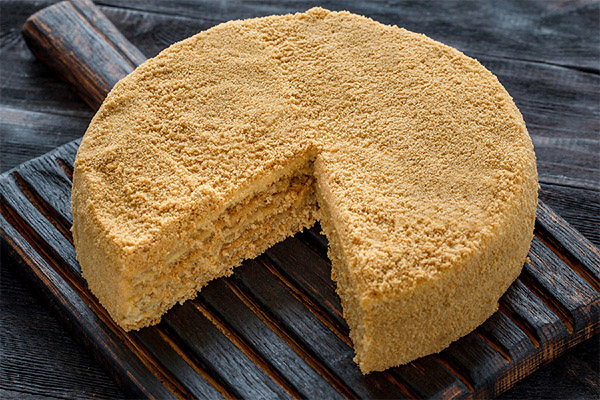
For it you will need the following ingredients:
- honey - 2 tbsp;
- granulated sugar - 250 grams;
- chicken eggs - 2 pcs;
- vegetable oil - 70 gr;
- baking powder - 2 tsp;
- flour - 800 gr.
For the filling:
- condensed milk - 1 jar;
- Butter - 250 gr.
Stages of preparation:
- Prepare in advance 5 sheets of parchment - from it you need to cut circles of 20 cm in diameter. They will be needed to prepare the cakes.
- Mix the sugar and eggs in a bowl until the eggs have dissolved.
- Melt the butter over a low heat and add the honey, baking powder and egg-sugar mixture. Stir all the ingredients over the heat until the first signs of boiling appear.
- Remove the saucepan from the heat and add the flour. Knead the dough until it is no longer sticky - it should be slightly moist, like for cookies.
- Divide the dough into 5 portions and place each portion of dough on the prepared parchment paper. Cover them with clingfilm and leave for 20 minutes at room temperature.
- After the specified time, roll out the dough into 5 circles 2 cm thick and place them in an oven preheated to 180 degrees. Bake the slices for 5 minutes until golden brown.
- Mix butter and condensed milk together. Spread liberally with the cream on the first layer, then another layer, and so on. Sprinkle the cream on the top and sprinkle the crushed cookies on top.
- Leave the cake in the fridge for 8 hours before serving - so that it develops its taste better and the cake won't fall apart when cut.
Interesting facts about honey

- In ancient times, honey was considered a divine substance. The creators of myths associated it with the nectar of the sky, which was for a long time the food of the gods.
- In ancient Egypt, honey was the most popular medicine - it is mentioned in 900 known ancient medicines. The product of beekeeping was also an ingredient in medieval medicines because it was the only substance available that could make medicines palatable.
- Adding honey to tea is mistakenly considered medicinal - at elevated temperatures, all the useful properties are destroyed. Therefore, it is better to eat honey and drink it with tea.
- Honey is stored for a very long time, as it mainly contains sugar with the addition of some antibacterial compounds and enzymes, courtesy of the bees.
- Honey is the only product that includes all the substances needed to sustain life.
- Honey is a common remedy for insomnia, one of the main symptoms of anxiety. Even doctors advise taking milk with honey before going to bed to reduce anxiety.
- Men are advised to consume darker varieties of honey to resolve various problems in the body - they contain more components that are useful for certain functions. Also, the product is able to reduce the signs of a hangover, so you can drink a cup of tea with a spoon of honey in the morning or simply spread it on bread.
- Only buy honey in glass containers. In aluminum and metal, it will not last long and will spoil faster.
- If honey begins to cloud over during storage, it does not mean that it is not natural or has begun to spoil. It is just the beginning of the crystallization process.
- Honey was considered currency many years ago - it was paid for in ancient Rome and Egypt.
«Important: All information on this site is provided for informational purposes only. purposes. Consult with your health care professional before applying any recommendations. specialist before using the recommendations. Neither the editors nor the authors shall be liable for any possible harm caused by materials."

